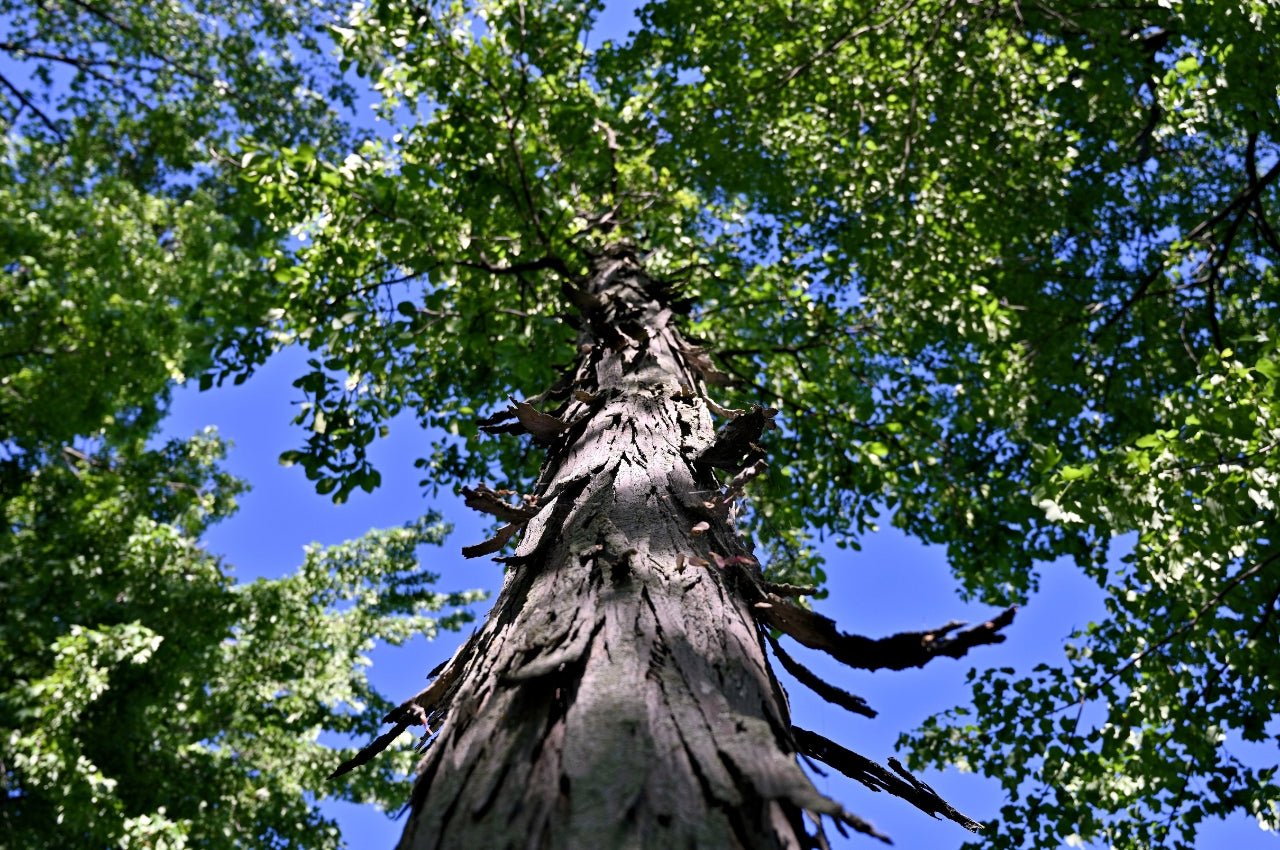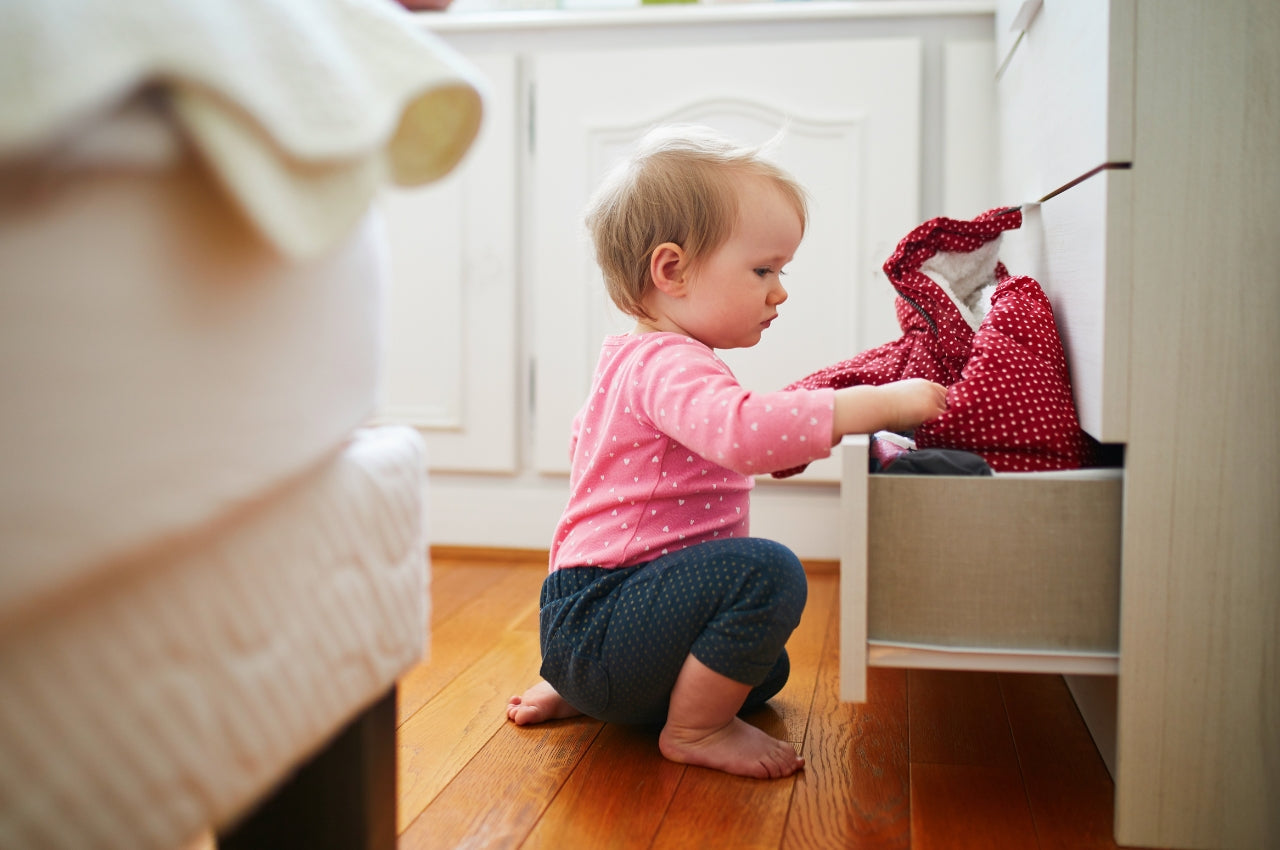Is hickory wood a good choice for furniture? Well, if you're looking for a very durable domestic hardwood with a rustic charm, hickory certainly fits the bill. However, to truly appreciate what hickory brings to the table, let's explore its unique characteristics.
Characteristics of Hickory
Hickory is not a single species but rather a term referring to several tree species within the Carya genus, many of which are native to North America.
Hickories are broadly categorized into two types: True Hickory and Pecan Hickory. True Hickories, such as Shagbark, Shellbark, and Mockernut, are generally slightly denser than Pecan Hickories, which include Pecan, Water Hickory, and Bitternut Hickory. While these groups differ in density and hardness, it's often marginal.
Hickory in the Wild
Normally tall and upright, hickory trees reach about 60 to 100 feet, with straight trunks that support rounded trunks. The bark varies notably by species. Shagbark, for example, gets its name from its bark that peels away in long, shaggy strips. Other species like Bitternut Hickory have a relatively smoother bark that develops shallow, interconnected ridges as it ages.
Hickories have compound leaves, featuring 5 to 9 leaflets per stem, which turn into brilliant golden yellow in autumn. While most produce edible nuts, like Pecan, Shellbark, and Mockernut, others are too bitter and inedible, like Bitternut and Water Hickory.
Durability and Strength
Hickory stands out as one of the hardest and strongest North American hardwoods. For example, on the Janka hardness scale, Shagbark Hickory scores around 1,880 lbf, significantly higher than Hard Maple at 1,450 lbf and White Oak at 1,350 lbf. This means hickory has exceptional resistance to dents and scratches, making it an incredibly durable wood for furniture.
In fact, hickory is so strong and shock-resistant that throughout history, it has been used as the material for a wide range of hardwearing tools such as bows, axe handles, fishing rods, and carriage wheel spokes, including sports equipment like hockey sticks, baseball bats, and tennis rackets.
Color and Grain
Hickory sapwood is typically light-colored, like a creamy yellow, while the heartwood is darker, often a tan or reddish-brown. The demarcation tends to be sharper than other wood species, which is why a single board of hickory can sometimes have a dramatic color variation, with the blonde sapwood running alongside the warm, mocha heartwood.
The wood grain is typically straight and tight, although it can also feature interesting breaks in pattern through waves and color streaks. This natural variation gives hickory a more rustic and figured aesthetic.
Hickory Furniture Pros and Cons
As mentioned, hickory is exceptionally durable, which means you can expect hickory wood furniture to withstand heavy use and resist everyday wear and tear. Moreover, the natural color variation and pattern give hickory furniture a distinctive, rustic beauty.
Hickory has disadvantages that make it a less popular choice than white oak, maple, and walnut. The same density that lends it impressive strength actually makes the material difficult to work with. Some woodworkers find the material too hard to cut, shape, and join—it can even dull cutting tools. As a complete piece, hickory furniture is also heavy and challenging to move.
The dense and interlocked grain structure of hickory also makes it prone to tearing out when cut with machines like router bits. Moreover, it's prone to warping and splitting and may require longer, more careful drying before it's fit for furniture making.
Generally, hickory wood is a great choice for furniture (which means it's a yay!), especially if you're looking for pieces with a rustic style. However, it requires more work and attention, something that experts and skilled artisans can overcome.
Hickory vs. Hard Maple vs. White Oak
|
Features |
Shagbark Hickory Carya ovata |
Hard Maple Acer saccharum |
White Oak Quercus alba |
|
Janka Hardness Rating |
1,880 lbf |
1,450 lbf |
1,350 lbf |
|
Durability |
Exceptional |
Very Good |
Very Good |
|
Workability |
Difficult |
Moderate |
Moderate |
|
Weight |
Heavy |
Moderately Heavy |
Moderately Heavy |
|
Color |
Creamy white sapwood, brown heartwood |
Creamy white to light brown |
Light to medium brown, sometimes with a gray or olive cast |
|
Grain |
Straight with occasional waves and a medium coarse texture |
Straight with, occasionally figures like a birdseye pattern, and fine, even texture |
Straight grain and a medium to coarse texture |
Hickory, Hard Maple, and White Oak are all beautiful and durable materials for wood furniture. At the hands of skilled artisans and seasoned craftsmen, furniture made from these types of wood can last for decades, and even be passed down to the next generation.
As one of the densest hardwoods, though, hickory tends to be more labor-intensive to work with than hard maple and white oak. But for most consumers, this isn't a concern. What matters most often comes down to aesthetics.
When placed side by side, hickory tends to stand out, with its bolder color variations. Its natural beauty makes it well-suited to spaces with a more rustic touch, like a cabin or farmhouse. Hard maple is a great choice for modern and minimalist interiors like Scandinavian, with its consistently subdued color and pattern.
Meanwhile, white oak features a distinct but familiar wood grain, making it work well for classic spaces with a more contemporary touch, like modern farmhouse or mid-century modern.
Related Posts
- What is Maple Wood? – T.Y. Fine Furniture
- What is Oak Wood – T.Y. Fine Furniture
- What is Sycamore Wood? – T.Y. Fine Furniture
Sources
- Carya ovata
- Shagbark Hickory | The Wood Database (Hardwood)
- Is hickory good for woodworking? - Quora
Featured Photo by Elmar Langle from Getty Images via Canva



Leave a comment
This site is protected by hCaptcha and the hCaptcha Privacy Policy and Terms of Service apply.